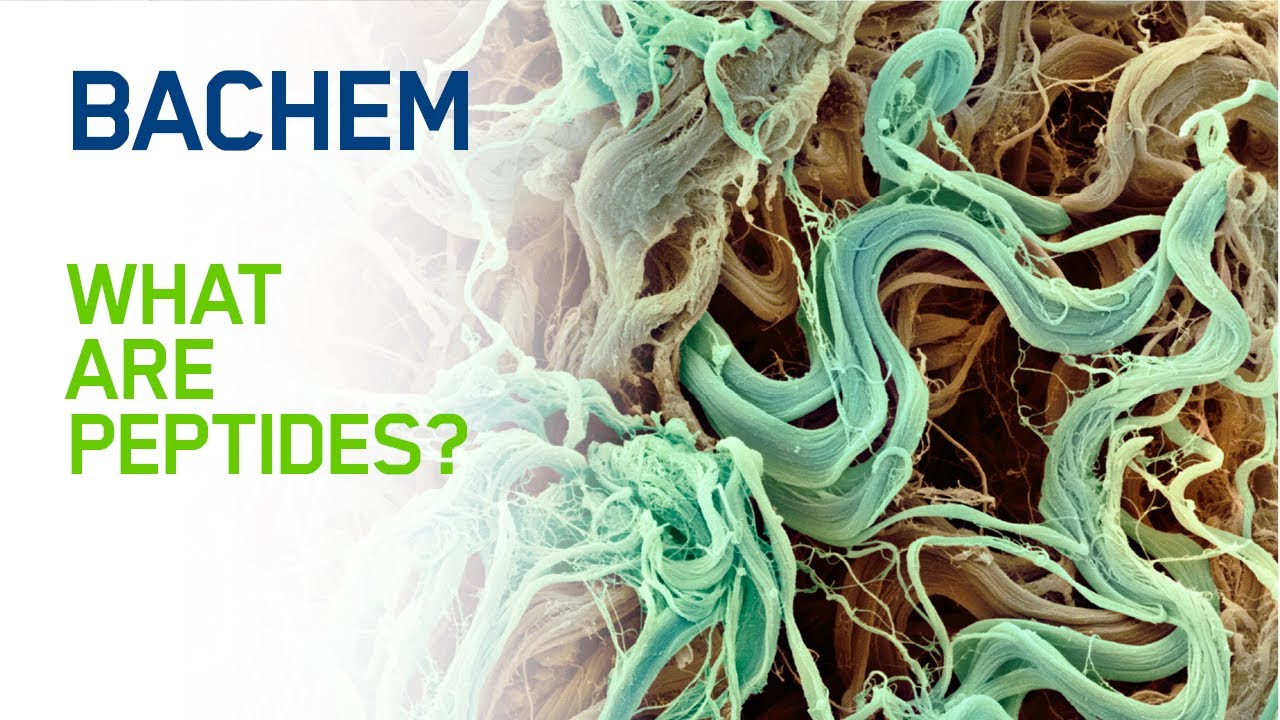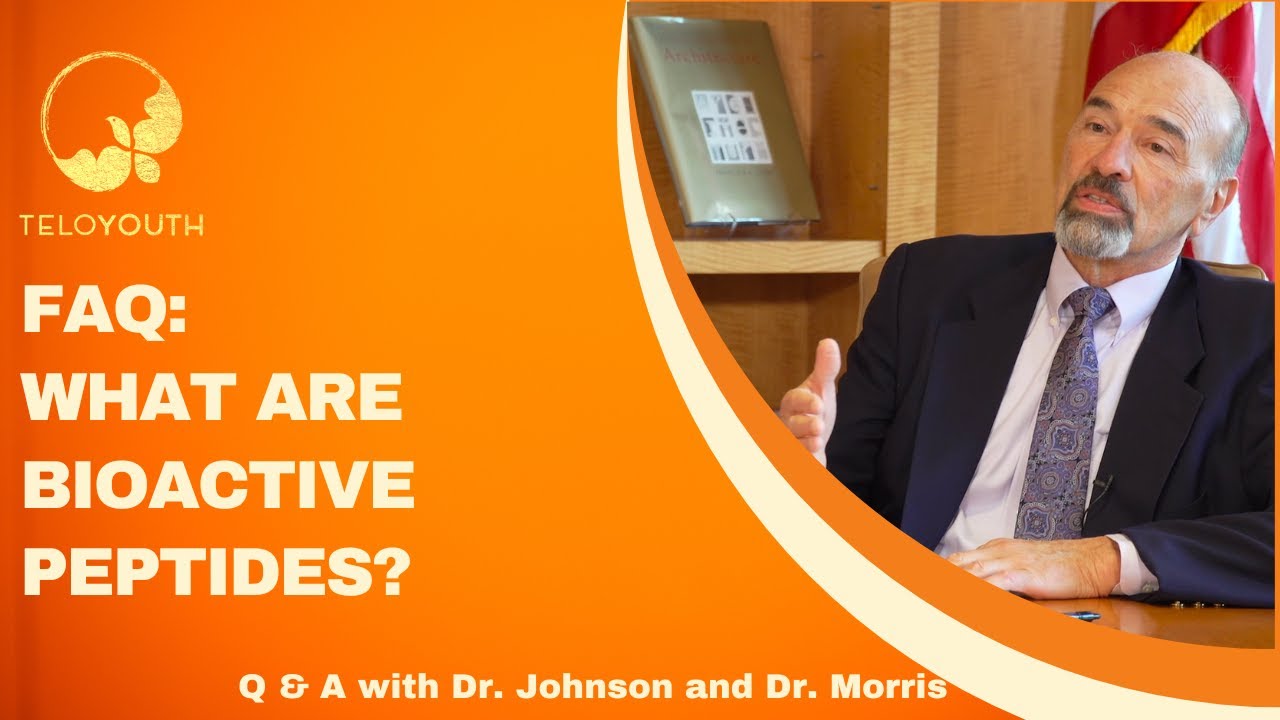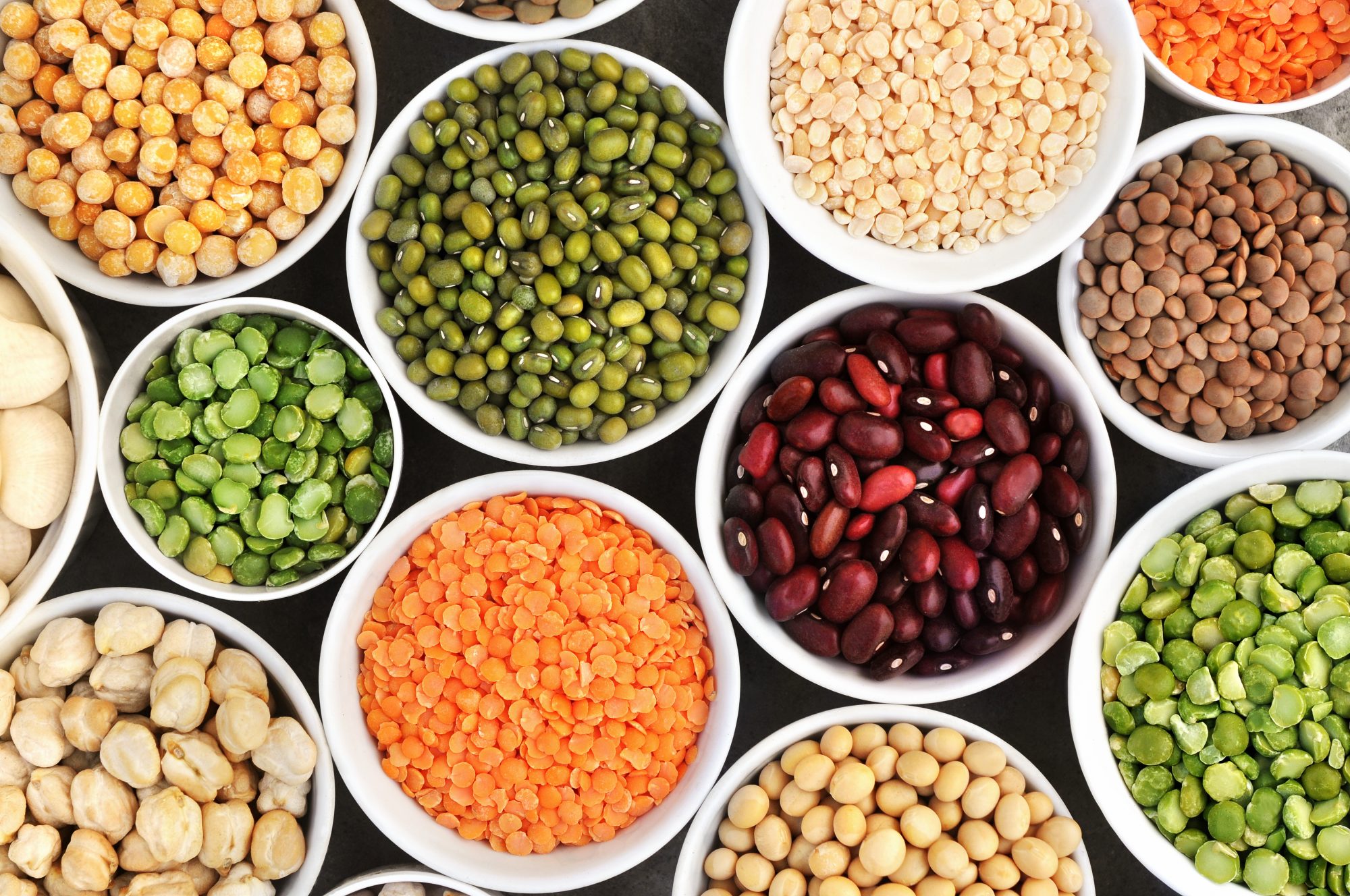Bioactive Peptides - Its Application In Pharmacy
Several bioactive peptides have been found to originate from food-derived macro-biomolecules (such as lipids, proteins, and carbohydrate polymers), but protein-derived biomolecules are the most varied and well-researched. According to ancient Chinese literature, food and medicine share a common ancestor. The intimate connection between nutrition and health has been supported and furthered by centuries of research.
Author:Suleman ShahReviewer:Han JuJul 30, 202257 Shares1.4K Views

Several bioactive peptideshave been found to originate from food-derived macro-biomolecules (such as lipids, proteins, and carbohydrate polymers), but protein-derived biomolecules are the most varied and well-researched.
According to ancient Chinese literature, food and medicine share a common ancestor. The intimate connection between nutrition and healthhas been supported and furthered by centuries of research.
Even today, we are still fascinated by claims that foods and their ingredients can improve our overall quality of life.
Some protein hydrolysates, whether in their intact form or as hydrolysates, have been demonstrated to, among other things, cause certain "hormone-like" reactions that have positive health effects in vivo and/or in vitro.
These protein hydrolysates, also referred to as bioactive peptides, are particular protein fragments with the capacity to impart a physiologically measurably biological effect that will have a positive impact on body conditions or functions and ultimately influence health.
Antioxidative, antimicrobial, antihypertensive, cytomodulatory, and immunomodulatory effects of bioactive peptides under in vivo and in vitro conditions are some examples of favorable physiological responses.
Peptides As Active Pharmaceutical Ingredients
By regulating, directing, and/or coordinating inter and intracellular communications and cellular function, proteins and peptides play crucial roles in the functioning of living body systems. Peptides are more nutritionally accessible than proteins or free amino acids. Low-molecular-weight peptides are less allergenic than native proteins, which is why milk protein hydrolysates are used in hypoallergenic baby foods.
The various physiological functions of peptides also make them suitable candidates for the creation of therapeutic agents, serving as nature's toolbox. The type, quantity, sequence, and properties of the amino acids present in the peptide determine the wide range of physiological activities that are induced by bioactive peptides.
It is important to note that while some proteins, including lysozyme and α-lactalbumin, retain their bioactivities even in the denatured state after hydrolysis, in most cases, these bioactivities are dormant until the protein is broken down to release biologically active peptides.

What are peptides? 🤔
Changing Trends
Novel peptide sequences with potential health applications are being discovered, which is important for the scientific community, pharmaceutical companies, and consumers. Pharmaceutical companies are also interested in peptide therapeutics. In 2010, 60 peptide drugs were approved and generated US$ 13 billion in sales (1.5% of all drug sales). There is a 7.5% to 10% annual growth rate. Peptide-based therapeutics have a bright future for the following reasons:
- Peptides can be used as excipients in drug formulations to modify biological activity, target delivery, or transport across cellular membranes.
- Peptide-based therapies are effective in treating cancers, metabolic disorders, cardiovascular disease, and infectious diseases. Peptides have a broad therapeutic action, low biodeposition in body tissues, and high biospecificity to targets.
- Physiologically, peptides play key roles as hormones, chemokines, and cytokines. Peptides are safe and nontoxic because they're made of tolerable amino acids. Side effects of peptide drugs are usually dose-related or injection-site reactions.
- Physicians, pharmaceutical companies, and patients increasingly accept protein therapies. From 1.2 per year in the 1970s to 16.8 per year so far in the 2000s, the number of peptide NCEs entering clinical study has increased by 1300% in the US. This increased acceptance is partly due to technological solutions to problems like short half-life and delivery of peptide molecules.
Production And Therapeutic Applications Of Bioactive Peptides
Up-down degradation, whole expression, bottom-up construction, or whole extraction yield biologically active peptides. This article distinguishes between bioactive and therapeutic peptides. Bioactive peptides are food-protein-derived peptides that trigger physiological biological activities in living body systems, not synthesized or isolated therapeutic peptides.
Therapeutic Applications Of Bioactive Peptides
The therapeutic potential of bioactive peptides is supported by a large body of research, including human studies. Below are some peptide physiological effects.
Antimicrobial Peptides
Peptides have antimicrobial properties. These peptides are short (between 10 and 50 amino acid residues), hydrophobic, and cationic, like multicellular peptides. Most antimicrobial bioactive peptides penetrate and disrupt microbial membrane integrity or translocate across it and act on internal targets.
Antimicrobial peptides have been found in milk protein hydrolysates. Recently, a potent antimicrobial peptide was isolated from milk whey proteins such as lactoferrin. Recently, lactoferrin has gained popularity. It kills enveloped and naked viruses like rotavirus and adenovirus. Also, tryptichydrolysate fractions of β-lactoglobulin whey proteins are potent Listeria monocytogenes and Staphylococcus aureus inhibitors. Two anionic peptides (Ile-Asp-Ala-Leu-Asn-Glu-Asn-Lys and Thr-Pro-Glu-Val-Asp-Asp-Glu-Ala-Leu-Glu-Lys) inhibited Listeria and Staphylococcus growth.
In another study, 60 human subjects were randomized, controlled, and blinded to determine how goat milk cheese affects Helicobacter pylori activity in their stomachs. Although goat and cow milk (as cheese) did not reduce H. pylori activity in infected people's stomachs, both improved gastrointestinal health.
Antimicrobial peptides are effective against bacteria, fungi, viruses, and parasites. As such, they are potential natural biopreservatives and effective in combating multidrug-resistant infections while acting as alternatives to conventional antibiotics in controlling bacterial infections.

[FAQ] Bioactive Peptides? [TELOYOUTH]
Anticancer Peptides
Human cancer is one of the leading causes of death in developed countries, so pharmaceutical companies are developing antitumor and anticancer drugs. Oncology research has improved our understanding of cancers, but therapeutic opportunities are limited due to the difficulty of targeting cancer cells without harming healthy ones. Biomolecules that target cancer-associated antigens can directly modulate cancer cell proliferation and survival.
Food protein hydrolysates contain anticancer peptides. Recent pepsin hydrolysates of Mytilus-coruscus proteins identified a novel anticancer peptide. The purified peptide (Ala-Phe-Asn-Ile-His-Asn-Arg-Asn-Leu-Leu) killed prostate, breast, and lung cancer cells but not normal liver cells.
Antioxidant and anticancer peptides rich in tyrosine, lysine, arginine, phenylalanine, and histidine were obtained by treating Styelaclava proteins with alcalase. Gel-filtration purification of the hydrolysate yielded two antioxidant and anticancer peptide fractions. The anticancer peptides inhibited AGS, DLD-1, and HeLa cell lines.
Anticancer bioactive peptides have significant health-promoting effects that can be used in the pharmaceutical industry.
Antioxidative Peptides
Free radicals and reactive oxygen species (ROS) in the body cause cell damage and lead to hypertension, cardiovascular disease, cancer, diabetesmellitus, neurodegenerative, and inflammatory diseases. Antioxidants prevent oxidative damage by scavenging free radicals and ROS and inhibiting lipid peroxidation. Several studies have found antioxidant properties in protein-derived peptides.
This peptide (with the sequence Glu-Ser-Thr-Val-Pro-Glu-Arg-Thr-His-Pro-Ala-Cys-Pro-Asp-Phe-Asn) inhibited lipid peroxidation more than tocopherol, a well-known antioxidant used as a positive control. The peptide effectively quenched 1,1-diphenyl-2-pycryl-hydrazyl, hydroxyl, peroxyl, and superoxide radicals, and decreased t-butyl hydroperoxide-induced cytotoxicity on human embryonic lung fibroblasts while protecting DNA damage.
Antihypertensive Peptides
Antihypertensive peptides are the most studied food protein hydrolysate bioactivity. Angiotensin I-converting enzyme (ACE, peptidyldi-peptide hydrolase) is a renin–angiotensin system enzyme. By converting angiotensin I to the vasoconstrictor angiotensin II or by inactivating bradykinin, this enzyme regulates extracellular fluid volume and arterial vasoconstriction. ACE inhibition lowers blood pressure, helping control hypertension. In 2000, 972 million adults had hypertension, and that number is expected to rise by 60% to 1.56 billion in 2025.
Hypertension is a global health priority that requires prevention, detection, treatment, and control. Several potent synthetic peptides are used to treat hypertension and heart failure, but they're expensive and have side effects. Antihypertensive bioactive peptides are a cheap alternative with few side effects. Most antihypertensive peptides are short and end in proline. Proline residues help peptides resist enzymatic degradation in the gut.
Cytomodulatory And Immunomodulatory Peptides
In immunocompromised people, HIV and cancer progress quickly if not controlled. Research focuses on new therapies and immune-modulating macromolecules. Biologically active cytomodulatory peptides modulate immune cells. They modulate cell viability (proliferation, differentiation, apoptosis) and, along with immunomodulatory peptides, may control tumor growth.
Mozzarella cheese waste whey peptides showed antiproliferative effects on CaCo2 cell lines. Cytomodulatory peptides inhibit cancer cell growth while stimulating immunocompetent and neonatal intestinal cells. Immunomodulatory peptides improve immune cell functions, antibody synthesis, cytochrome regulation, and gastrointestinal mucosal immunity.
Milk proteins contain immunomodulatory peptides that trigger specific (lymphocyte activation and proliferation, antibody production, cytokine expression) and non-specific (macrophage, granulocyte, and natural killer cell functions) immune responses.
Derma-Pharmaceuticals From Bioactive Peptides
In skin care, proteins and peptides modulate cell proliferation, migration, inflammation, angiogenesis, and melanogenesis. Most skin-care products are pharmaceuticals. Thus, bioactive peptides can be used as cosmetic and dermal-pharmaceutical ingredients.
Bioactive peptide-based dermatological products are patented. X-Thr-Thr-Lys-Y peptides, where X is lysine and Y is serine, have been patented (US patent no. 6620419) as healing, hydrating, or all skin treatments. They fight wrinkles, skin aging, and dryness.
US patent no. 8071555 discloses a tetrapeptide with the sequence Pro-Glu-Glu-X (where X can be lysine or isoleucine). As a skin care ingredient, this tetrapeptide controls inflammatory skin disorders.
Multifunctional Peptides And Peptides With Other Bioactivities
Some bioactive peptides have multiple bioactivities. Most of the bioactive peptides are multifunctional peptides. Lactoferrin has antibacterial, antifungal, antiviral, antiparasitic, antitumor, and immunomodulatory properties.
Peptides from ovine αs2-casein f(203–208) are antimicrobial, antihypertensive, and antioxidant. This report doesn't cover all peptide bioactivities. Hypocholesterolemic, antithrombotic, antiulcerogenic, opioid, and mineral-binding peptides are among them.
People Also Ask
What Are Bioactive Peptides Used For?
The development of functional foods and nutraceuticals using bioactive peptides made from food proteins has great potential. Bioactive peptides have a variety of important roles in the living body, including anti-inflammatory, anti-cancer, anti-microbial, immunomodulatory, and antihypertensive effects.
What Are Peptides Used For In Pharma?
Numerous diseases are being successfully treated with peptides, such as type 2 diabetes (controlled with the approved glucagon-like peptide-1 receptor liraglutide), irritable bowel syndrome (managed with linaclotide, which is currently undergoing approval), and acromegaly (treated with octapeptide somatostatin analogues).
What Is The Major Source Of Bioactive Peptides?
The most abundant sources of bioactive proteins and peptides derived from food are cow's milk, cheese, and dairy products (Korhonen, 2009; El-Salam and El-Shibiny, 2013; Lemes et al., 2016; Mohanty et al., 2016).
How Are Bioactive Peptides Made?
Food proteins can be hydrolyzed enzymatically (using proteolytic enzymes from either plants or microbes), hydrolyzed with digestive enzymes (simulating gastrointestinal digestion), or fermented using starter cultures to produce bioactive peptides.
Conclusion
Bioactive peptides are ubiquitous biomolecules that are readily available from food proteins and are also widely distributed. Therefore, there is no restriction on how many peptides can be produced from a single food protein. Each of these peptides might have a distinct structure and biofunctionalities that the pharmaceutical industry can use. The potential of food-derived bioactive peptides will likely spur a shift away from small molecules and biologics and toward bioactive peptides in the pharmaceutical industry as research continues to uncover technologies and methods to overcome obstacles to the use of peptide therapeutics.

Suleman Shah
Author
Suleman Shah is a researcher and freelance writer. As a researcher, he has worked with MNS University of Agriculture, Multan (Pakistan) and Texas A & M University (USA). He regularly writes science articles and blogs for science news website immersse.com and open access publishers OA Publishing London and Scientific Times. He loves to keep himself updated on scientific developments and convert these developments into everyday language to update the readers about the developments in the scientific era. His primary research focus is Plant sciences, and he contributed to this field by publishing his research in scientific journals and presenting his work at many Conferences.
Shah graduated from the University of Agriculture Faisalabad (Pakistan) and started his professional carrier with Jaffer Agro Services and later with the Agriculture Department of the Government of Pakistan. His research interest compelled and attracted him to proceed with his carrier in Plant sciences research. So, he started his Ph.D. in Soil Science at MNS University of Agriculture Multan (Pakistan). Later, he started working as a visiting scholar with Texas A&M University (USA).
Shah’s experience with big Open Excess publishers like Springers, Frontiers, MDPI, etc., testified to his belief in Open Access as a barrier-removing mechanism between researchers and the readers of their research. Shah believes that Open Access is revolutionizing the publication process and benefitting research in all fields.

Han Ju
Reviewer
Hello! I'm Han Ju, the heart behind World Wide Journals. My life is a unique tapestry woven from the threads of news, spirituality, and science, enriched by melodies from my guitar. Raised amidst tales of the ancient and the arcane, I developed a keen eye for the stories that truly matter. Through my work, I seek to bridge the seen with the unseen, marrying the rigor of science with the depth of spirituality.
Each article at World Wide Journals is a piece of this ongoing quest, blending analysis with personal reflection. Whether exploring quantum frontiers or strumming chords under the stars, my aim is to inspire and provoke thought, inviting you into a world where every discovery is a note in the grand symphony of existence.
Welcome aboard this journey of insight and exploration, where curiosity leads and music guides.
Latest Articles
Popular Articles
